Naoshima, the Art Island, Japan
- Nimrod

- Aug 9
- 6 min read
Updated: Aug 14
November 2024 [To All Posts in Japan]

Content
Naoshima the Art Island - Introduction
Naoshima, the art island, is the most famous among the art islands in Japan’s Seto Inland Sea and is close to the city of Okayama. Its lesser-known neighbors, Teshima and Inujima, together with Naoshima make up part of the “Benesse Art Site” project—the collective name for Benesse Corporation’s art ventures.
Visiting here is like taking a modern art break—something different and distinct from Japan’s traditional sites.

The Benesse Corporation invited renowned architect Tadao Ando to design and shape the island’s art spaces. One of the leading figures in minimalist architecture, Ando is known for his masterful use of bare concrete and natural light as his building materials.
His signature style blends the essence of traditional Japanese aesthetics with the clean, contemplative lines of Western modernism.
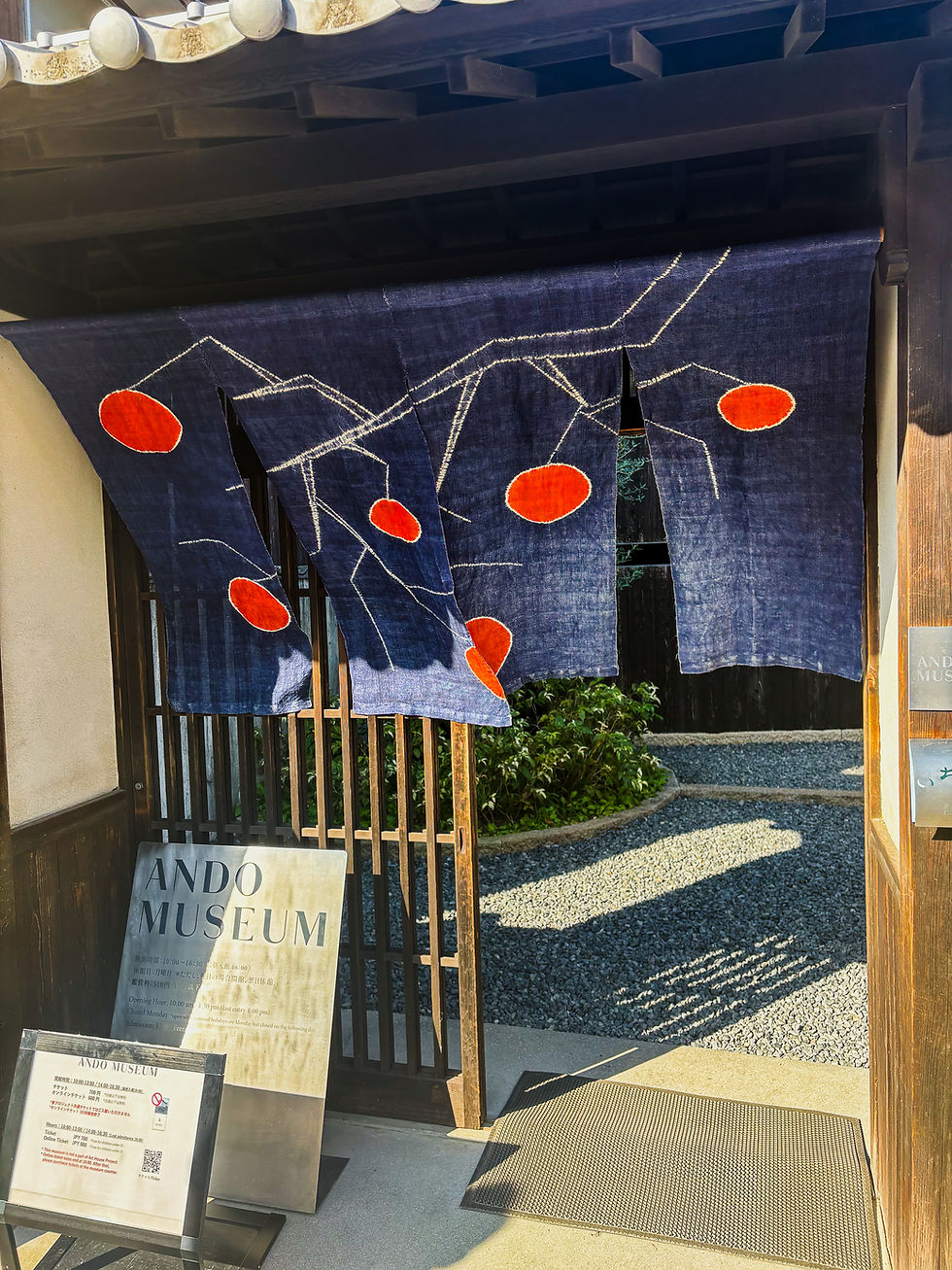
You can explore more and book museum tickets (and even a stay at the incredible Benesse House — part hotel, part museum!) on the project’s official website.
Just a heads-up: rooms can be reserved up to 180 days in advance, so plan ahead!
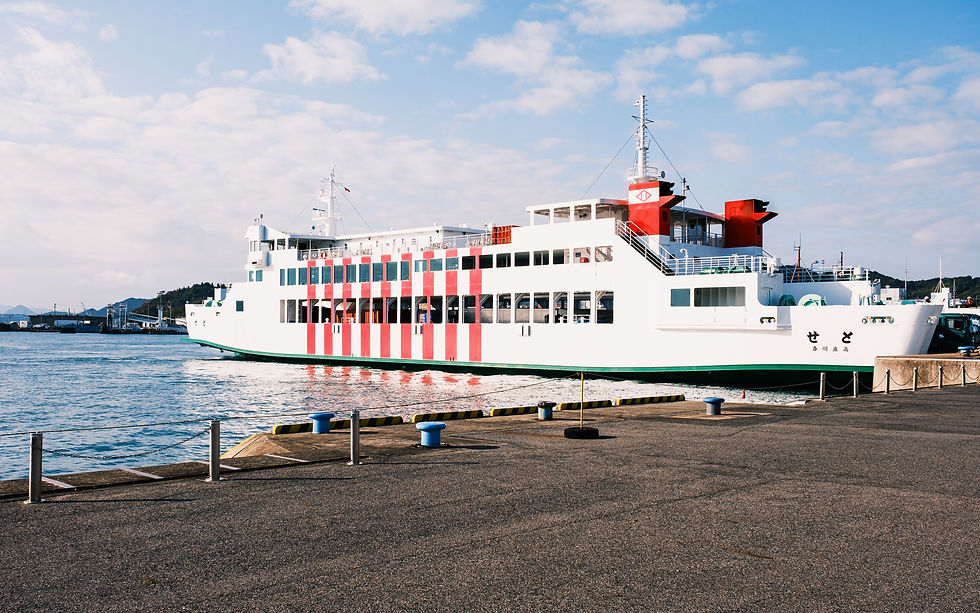
More Trips In Japan
A few tips before heading to Naoshima
Main Museums and Art Spots on Naoshima
Chichu Art Museum – a masterpiece built mostly underground, blending art, architecture, and natural light.
Benesse House Museum – part museum, part hotel, right on the water.
Naoshima Art Museum (New – opened in Spring 2025)
Lee Ufan Museum – a serene space dedicated to the Korean-Japanese minimalist artist.
Ando Museum – not a typical museum, but a beautifully renovated traditional house in Tadao Ando’s style.
Seaside Gallery – an open-air art walk along the island’s coast.
For a full list of museums on Naoshima and the neighboring islands: click here

Before you arrive, pick the museums and installations that interest you most.
Tickets often need to be booked in advance — especially in peak season.
If you’re not staying overnight, your time on the island will be limited, so a little planning goes a long way.
And one last thing: check the weather forecast before you go! Roaming around the island in the rain isn't quite as fun.
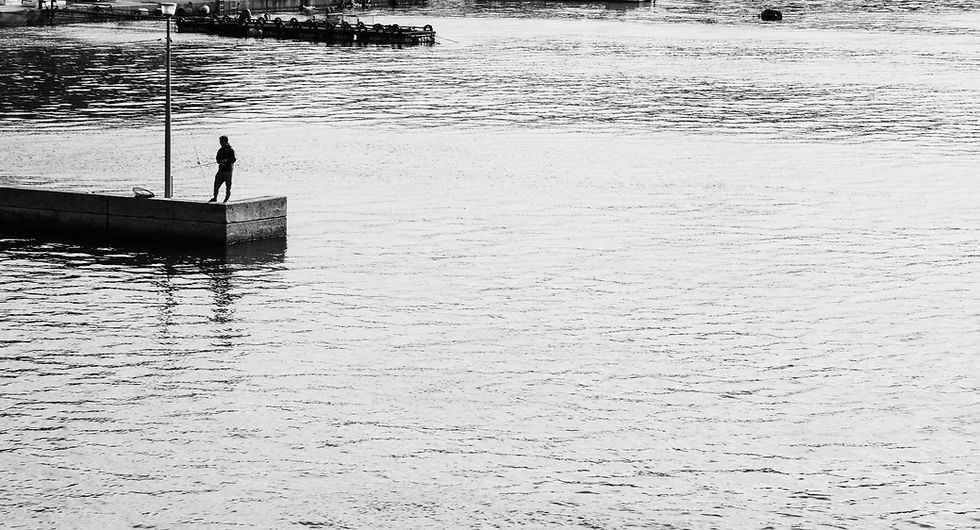
Getting to Naoshima
To reach Naoshima, you'll need to take a ferry from the port in Uno, a district in the city of Tamano.
Since we already had a rental car, we decided to bring it along — and that turned out to be a great choice. It gave us maximum flexibility to explore the island at our own pace, and there are parking lots near most of the museums.
Uno Port is about an hour’s drive from Kurashiki, where we were staying (and from where we also did the Shimanami Kaido cycling route).
At the port, we simply drove the car onto the ferry and off we went to the island. (If you’re using public transport, expect the trip from Kurashiki to take around two hours in total.)
🚗 Cost to bring a small car on the ferry: about ¥4,000 (2024)
⛴️ Ferry ride duration: around 15 minutes
🚶 On foot? You can take the ferry without a car too — a roundtrip ticket costs ¥570 per person. (2024)
📅 Ferries run about once an hour until evening.
Whether you're traveling with wheels or hopping on as a foot passenger, the ferry ride itself is short and scenic — a nice prelude to the art-filled day ahead.

Who Is Naoshima For
Naoshima is a dream come true for art and architecture lovers, especially those drawn to modern and contemporary art. But even if you're not an art buff, the island still offers a refreshing change of pace — a chance to experience a different kind of scenery, slow down, and take a break from Japan’s urban buzz.
And if you really catch the art island bug, don’t stop at Naoshima! You can also visit its lesser-known but equally fascinating neighbors: Teshima and Inujima.
Hardcore art enthusiasts? You’ll probably want to island-hop and explore all three.
Check out the full list of museums on Naoshima, Teshima, and Inujima here.
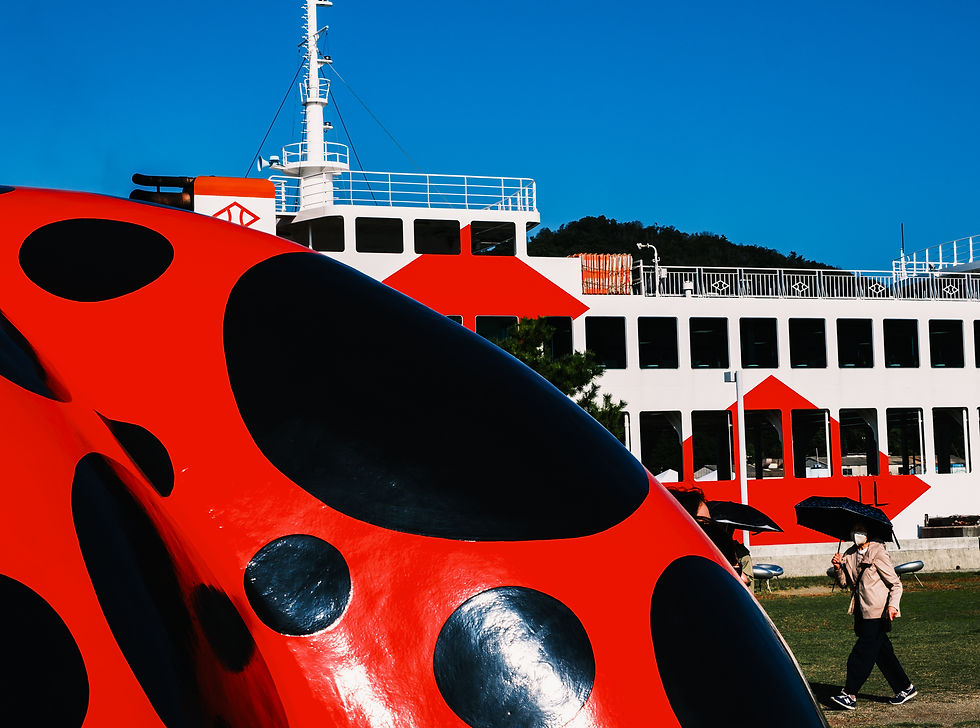
As soon as we drove off the ferry, we were greeted by Yayoi Kusama’s iconic red pumpkin — and of course, Dorit didn’t miss the chance to snap a very red photo with it!

Once you arrive on the island, you can rent electric bikes right outside the ferry terminal — a fun and easy way to get around for the day, whether you're heading to the museums or just cruising down to the beach.
Prefer to stay off the pedals? No problem — there’s also a regular bus service that connects the island’s main art spots.

Open-Air Installations
After a quick visit to the Tadao Ando Museum, we headed toward the island’s southern coast (everything here is just a short drive) to explore the Seaside Gallery — an open-air exhibition right by the water.
Here you’ll find works by Yayoi Kusama (yes, the famous Yellow Pumpkin), as well as pieces by artists like Niki de Saint Phalle and Karel Appel.
In August 2021, the Yellow Pumpkin was swept into the sea and damaged during a typhoon. You can watch the video here.


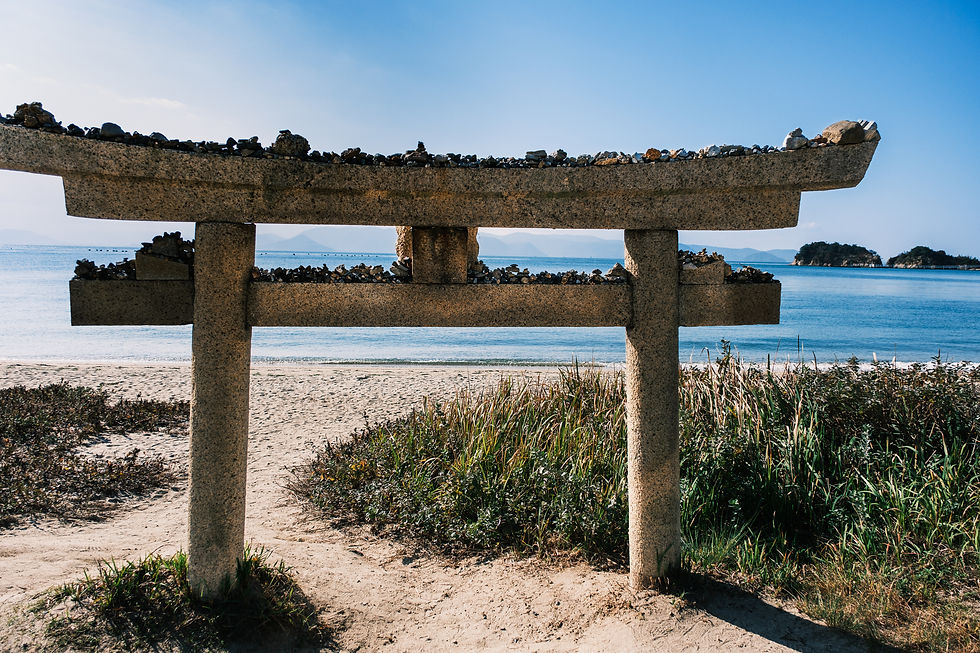



Chichu Art Museum

This stunning and unique museum, opened in 2004, is literally built into the hillside. (Ando’s architecture, with all that exposed concrete, always gives me bunker vibes).
We first stepped into a huge hall — but not before taking off our shoes and slipping into a pair of provided slippers. Inside, we were met with Claude Monet’s monumental Water Lilies, displayed in a way that reminded me of the Orangerie Museum in Paris.
The space was breathtaking — the scale of the paintings, the natural light, and even the sensation of bare feet on the floor all blended into an unforgettable experience.
Next came a vast chamber centered around a 1.8-meter granite sphere by American artist Walter De Maria. The sky and sunlight pour into the space, reflecting off the massive sphere, so the piece changes constantly throughout the day and with shifting weather.
We also stepped into the mesmerizing light installations by James Turrell. Here, you don’t just look at the art — you step into it. The light plays tricks on your senses, making the impossible seem within reach.
One moment, you’re staring at what appears to be a flat blue wall; seconds later, as you climb the steps, you pass right through it into another space. Once inside, it feels as if the door has closed behind you… and there’s no way out.
Benesse House Museum


The Benesse Art Site project began in 1992 and today even includes a hotel. It felt a little strange at first — the hotel reception desk is literally right next to the museum entrance.
Inside, there are several intriguing installations. One memorable piece by Richard Long features driftwood collected from the Seto Inland Sea, arranged into a perfectly engineered circle — a human-made order born from nature’s chaos.
Another work I especially loved was by Thai artist Pannaphan Yodmanee. She creates “murals” on fragments of material salvaged from temples, blending her paintings with both man-made and natural surfaces — from crumbling walls to pieces of rock.
And yes, there’s also a restaurant inside the museum. (This is Japan — you’re never left hungry!)

When you leave the museum and walk down the hill, you’ll reach an outdoor exhibition area featuring works by Yayoi Kusama — including her famous dots-covered spheres floating in a pool — as well as spheres displayed inside bare-concrete rooms.
Scroll down to see them below:


An Onsen to End the Day
There’s also a quirky public bath here called Naoshima Public Bath “I♥︎Yu”, created by artist Shinro Ohtake and located right by the port. If you’re staying overnight on the island, it’s the perfect place to soak and unwind after a full day of art-hopping.
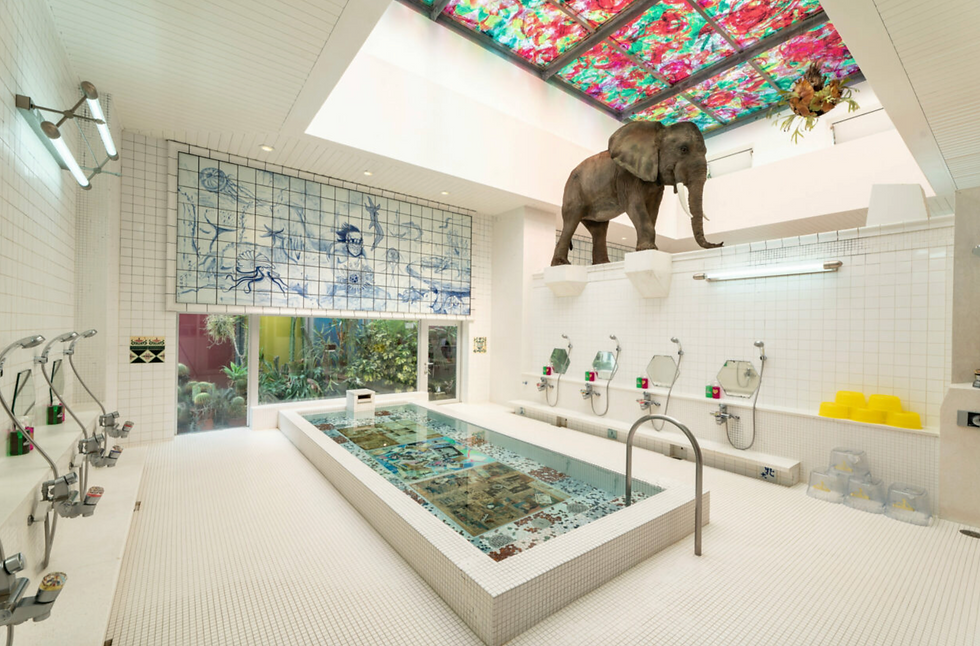
Artists & Links
Tadao Ando – Architect – Works in Naoshima
Lee Ufan – Museum in Naoshima
Yayoi Kusama – Wikipedia
Niki de Saint Phalle – French artist – Works in Naoshima
Karel Appel – Works in Naoshima
Walter De Maria – Granite spheres – Works in Naoshima
James Turrell – Light sculpture – Works in Naoshima
Richard Long – Works in Naoshima
Pannaphan Yodmanee – Works in Naoshima









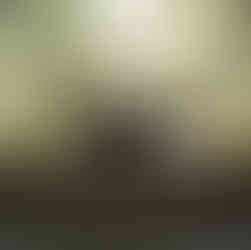












Comments